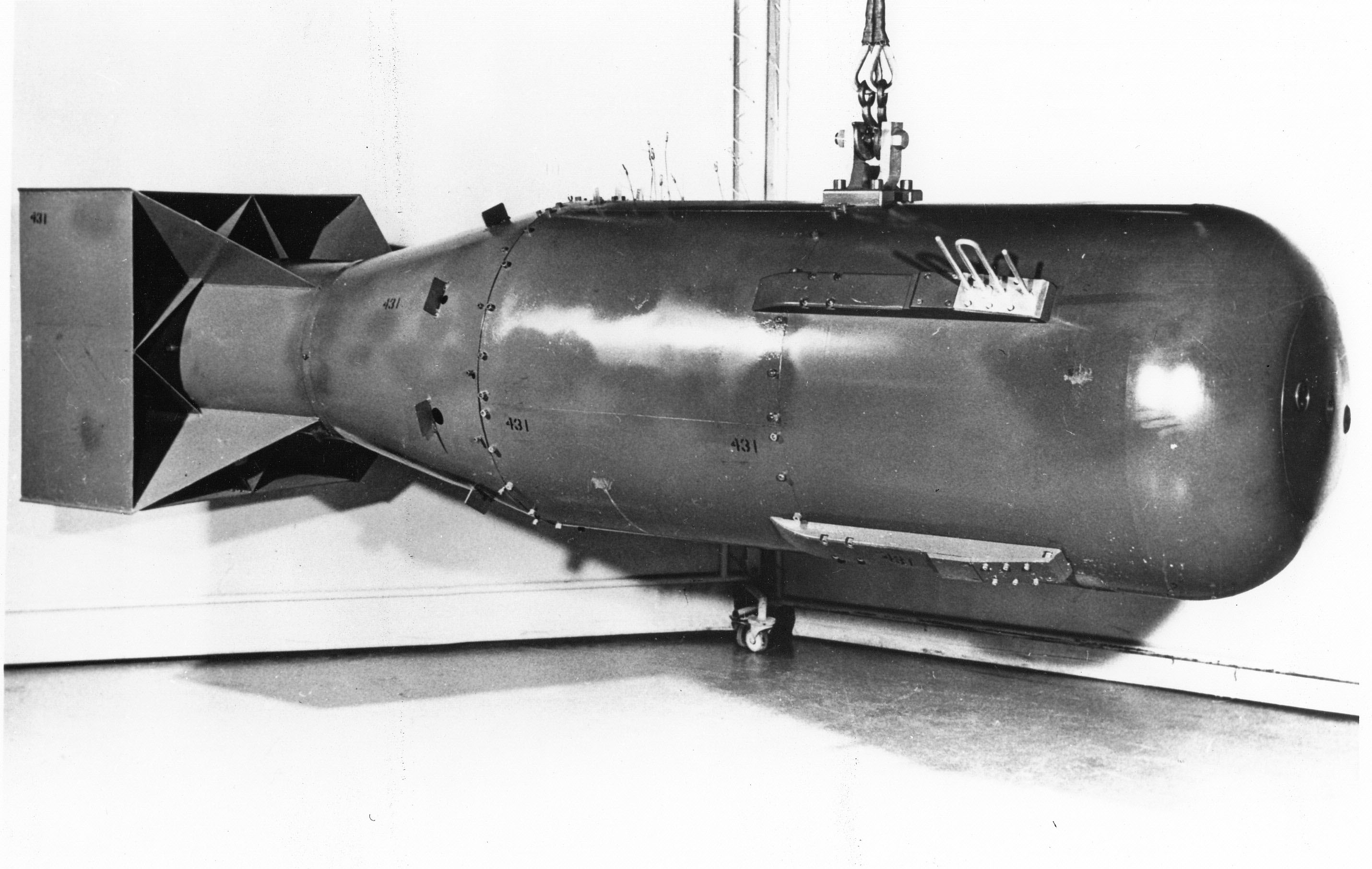
Nuclear triad
A nuclear triad is a three-pronged military force structure of land-based intercontinental ballistic missiles (ICBMs), submarine-launched ballistic missiles (SLBMs), and strategic bombers with nuclear bombs and missiles.[1] Countries build nuclear triads to eliminate an enemy's ability to destroy a nation's nuclear forces in a first-strike attack, which preserves their own ability to launch a second strike and therefore increases their nuclear deterrence.[2][3][4]
While traditional nuclear strategy holds that a nuclear triad provides the best level of deterrence from attack, most nuclear powers do not have the military budget to sustain a full triad. The only two countries that have successfully maintained a strong nuclear triad for most of the nuclear age are the United States and Russia.[4][8][1] Triads include:
The triad enables a nation to deliver a nuclear attack by land, sea or air. The United States built its triad to maximize the probability that it could retaliate for a first strike. Having three legs also protects against new technology, like an enemy missile-defense system.[10] It also gives the commander-in-chief the flexibility to use different types of weapons for the appropriate strike while also maintaining a reserve of nuclear weapons safe from a counter-force strike.
Tactical nuclear weapons, also known as non-strategic nuclear weapons,[15] are used in air, land and sea warfare. Their primary use in a non-strategic war-fighting role is to destroy military forces in the battle area. But, depending on the target in today's nuclear age, they are not counted toward triad status because of the possibility that many of these systems could be used as strategic weapons. During the Cold War, it was easy to point out which nuclear weapons were tactical. Each type of weapon had different capabilities that were better suited for different missions.[15] Air-to-air missiles, rockets, surface-to-air missiles, small air-to-ground rockets, bombs, and precision munitions have been developed and deployed with nuclear warheads. Ground forces have included tactical nuclear artillery shells, surface-to-surface rockets, land mines, medium and small man-packable nuclear engineering demolition charges, and even man-carried or vehicle-mounted recoilless rifles. Naval forces have carried weapons that include nuclear-armed naval rockets, depth charges, torpedoes, and naval gunnery shells.
Former triad powers[edit]
France[edit]
During the Cold War, France obtained ballistic missile submarines, land-based missiles, and nuclear-armed bombers. France was the fourth country to maintain a nuclear triad. In February 1960, France performed its first nuclear weapons test codenamed "Gerboise Bleue", meaning Blue Jerboa.[56] In 1955, the country started Project Coelacanth, the naval nuclear propulsion program.[56] Their first attempt to build a nuclear ballistic missile submarine, Q.244, failed and was cancelled in 1959.[56] The development of the land based reactor, PAT 1, allowed for Q.252 to be successful. The development of Q.252 led to the submarine Le Redoutable. The French produced the Mer-Sol Balistique Strategique, or M1 MSBS, a "submarine-launched ballistic missile".[56] Between 1971 and 1980, France finished their first generation of nuclear ballistic missile submarines, which included all five submarines in Le Redoutable and the one L'Inflexible submarine. Of the five submarines in the Le Redoutable class, only one submarine contained an M-2 missile, the Le Foudroyant; The M-1 missile was put on the Le Redoutable and Le Terrible; two ships contained both M-2 missiles and M-20 missiles. The L'Inflexible contained M4 missiles.[56] At this time, The Force Océanique Stratégique, the country's submarine fleet, contained 87 percent of the country's entire nuclear weaponry.[56] Between 1986 and 2010, the country began work on their second generation of nuclear ballistic missile submarines, which included the Triomphant, the Téméraire, the Vigilant, and the Terrible.[56] The Triumphant class of ships contained the M45 intermediate-range missile. The Terrible submarine contained the M51 missile.[56]
Redefining the nuclear triad[edit]
William Perry, who served as the 19th United States Secretary of Defense, has spoken for the removal of the land-based missiles from the nuclear triad. Perry believes that ICBMs are turning more into liabilities than assets. Perry says it would save "considerable cost" and would prevent an accidental nuclear war. Perry had experienced a false alarm for an incoming missile which later turned out to be a computer error. Perry's experience occurred 40 years ago, but similar false alarms have occurred since then, such as the 2018 Hawaii False Missile Alert. Perry says that a major problem with ICBMs is that they cannot be recalled once launched in the event of a false alarm.
American political scientist Matthew Kroenig has spoken against the removal of the land-based missiles leg of the nuclear triad. Kroenig writes that ICBMs offer defense from a pre-emptive nuclear strike. If the US had hundreds of ICBMs all over the US then this first attack would be a "near-insurmountable task."[68] Kroenig writes that these ICBMs could save "millions of American lives".[68] A study estimated that if the US were to keep its ICBMs, a Russian nuclear attack would result in 70 million US casualties, whereas if the US were to remove its ICBMs, that number increases to 125 million US casualties.[69] Kroenig also writes that the risk of accidental launch is less than the benefit of keeping ICBMs.[68] Also, Kroenig says "If ICBMs are truly expendable, then there is no reason to risk an accidental nuclear war just to avoid losing them."[68] Kroenig also writes that ICBMs are the least costly leg of the triad.[68] The annual operating cost of ICBMs is $1.4 billion for ICBMs, compared to $1.8 billion for bombers and $3.8 billion for SLBMs.[70]
The U.S. Department of Defense defends the current triad, stating that "Without ICBMs, a conventional-only attack on the limited number of submarine and bomber bases could significantly degrade the U.S. nuclear arsenal without rising to the level of nuclear use. This significantly lowers the threshold for an attack against the U.S. homeland. Also, the Triad's diversity enables mitigation of risk if a particular leg of the Triad is degraded or unavailable."[71]